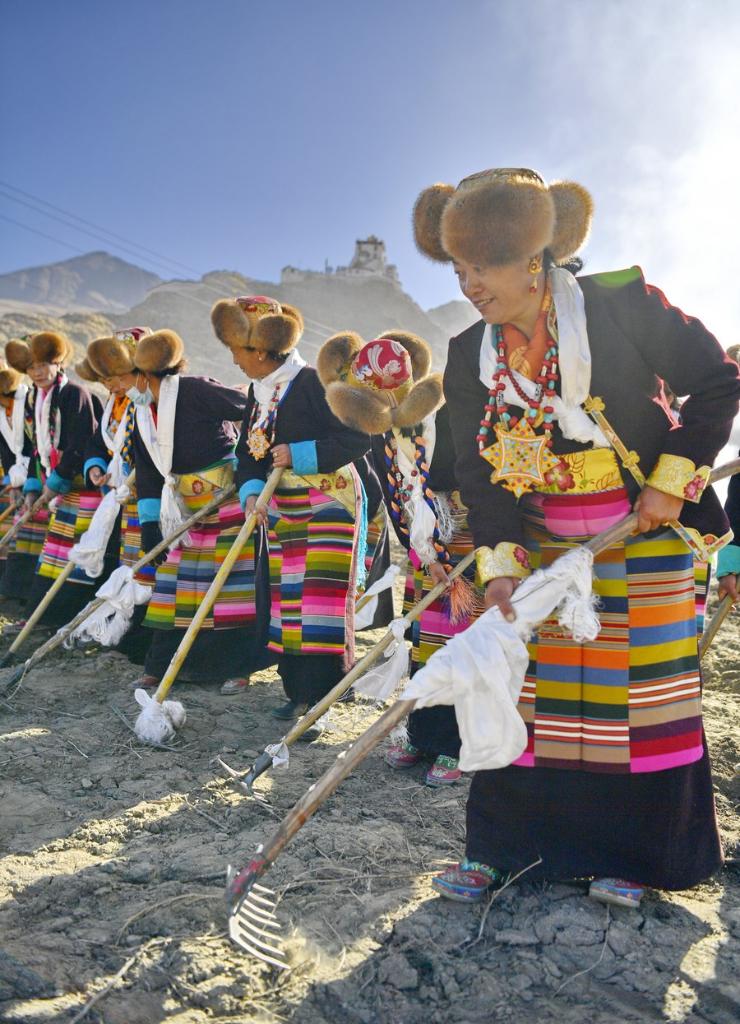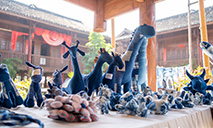Farming machines sow seeds of fortune in Tibet

Villagers participate in a ceremony marking the start of spring farming in Changzhug Township of Shannan, southwest China's Tibet Autonomous Region, March 16, 2022. (Xinhua/Zhang Rufeng)
LHASA, March 16 (Xinhua) -- The sounds of roaring machines broke the tranquility of the plateau city of Shannan, southwest China's Tibet Autonomous Region, as the annual spring farming ceremony was held there Wednesday.
Farmers wearing Tibetan costumes drove their tractors decorated as cattle to attend the ceremony on the farmland in the Mondronggang Community of Changzhug Township, Nedong District. On the trails left by the machines, barley seeds were sown into the soil.
"The ceremony symbolizes the beginning of a new year's farming. By holding the activity, we pray for a bumper harvest," said Basang, 64.
Basang's family has about 1.3 hectares of farmland, where he plans to grow barley, wheat and rape flowers.
Next to the farmland sits Yumbulagang, Tibet's first palace dating back more than 2,000 years. To provide grains for the Tibetan king living there, Tibet's first plot of farmland was plowed in the area back then.
Norbu Cering, a former blacksmith, recalled that spring used to be a busy time for him, as farmers had to prepare for the iron tools for the plowing.
"Villagers would bring barley liquor and butter tea to ask me to make plows, axes and sickles for them," said Norbu Cering, 55, also from Changzhug Township.
He bought the first tractor in 2015 and the second one in 2019. He no longer has to toil in the field now, and his son takes care of all the farmwork with the machines.
Yangjen Zhoigar, Party chief of the Mondronggang Community, said they have realized 100-percent mechanized farming by introducing machines for sowing, harvesting and straw packaging.
The grain output in Tibet reached a new high of 1.07 million tonnes in 2021, topping 1 million tonnes for a seventh straight year, according to the regional agriculture and rural affairs department.
Two-thirds the plateau region have turned to mechanized farming, and the labor force has been spared to work in cities or engage in tourism.
Ngoizhub Dorje, 39, now works as a van driver delivering construction materials, earning more than 60,000 yuan (about 9,410 U.S. dollars) a year.
"In the past, I had to stay at home for more than half a month during the harvesting time. Now only two days are enough," he said.
Ngoizhub Dorje said his father-in-law provides horse-riding services to tourists for the mountainous journey to Yumbulagang, making some 10,000 yuan a year.
All the impoverished residents in the community were lifted out of poverty in 2016. Last year, the per capita disposable income of the community increased by 13 percent to 22,000 yuan.
Ngoizhub Dorje plans to open a car wash this year. He said almost every household owns a car now, but there are no car washing services in the community.
"I'm very confident about the profitability of the car wash business," he said.
Photos
Related Stories
Copyright © 2022 People's Daily Online. All Rights Reserved.










